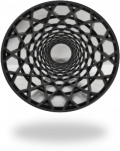In this page you can search all ARTES except ARTES 20 IAP, which can be found on Business Applications - Projects.
Please click on the + symbol to expand the Filter By ARTES Elements to narrow your search. If you are looking for a specific element select from the list provided and click on the Apply button to start the search and display the results.
Displaying 521 - 560 of 1733
UAS-APE
Status date:
Prime Contractor
Subcontractors
Xtend 5G
Status date:
Prime Contractor
Subcontractors
SkyMon VSAT
Status date:
Prime Contractor
Subcontractors
Reflect Array for Medium Size Apertures
Status date:
Prime Contractor
Subcontractors
OneWeb Power, TCR and PayLoad test System (PTS) EGSE
Status date:
Prime Contractor
Subcontractors
MCC-SO
Status date:
Prime Contractor
Subcontractors
M2MSatNet
Status date:
Prime Contractor
Subcontractors
Preparations for the World radio Conference 2019

Status date:
Prime Contractor
Subcontractors
IFM Micro 100
Status date:
Prime Contractor
Subcontractors
ARAMk4 SA
Status date:
Prime Contractor
Subcontractors
WIND Sequel
Status date:
Prime Contractor
Subcontractors
Next Generation Upright Metamorphic 4-Junction Space Solar Cells
Status date:
Prime Contractor
Subcontractors
AISMAN – Miniaturized Low-Weight Space Antenna for AIS VHF Applications
Status date:
Prime Contractor
Subcontractors
LOW THRUST, LOW IMPULSE BIT REACTION CONTROL THRUSTER
Status date:
Prime Contractor
Subcontractors
Thuraya Aero by SCOTTY – Systems for Cockpit-Services
Status date:
Prime Contractor
Subcontractors
Array Fed Reflector Antenna (FAFR)
Status date:
Prime Contractor
Subcontractors
5G4Space

Status date:
Prime Contractor
Subcontractors
QKD4ECI

Status date:
Prime Contractor
Frequency Hopped Spread Spectrum waveform implementation.
Status date:
Prime Contractor
Subcontractors
DR&PAP
Status date:
Prime Contractor
Subcontractors
OGS-LID
Status date:
Prime Contractor
Subcontractors
GEO Orbit Determination using an APS-based Navigation Sensor

Status date:
Prime Contractor
Subcontractors
NATALIA: New Automotive Tracking Antenna for Low-cost Innovative Applications

Status date:
Prime Contractor
Subcontractors
NANOcoat
Status date:
Prime Contractor
Overview of the satcom industry in ESA’s Cooperation States

Status date:
Prime Contractor
Subcontractors
FOLC

Status date:
Prime Contractor
HILINK
Status date:
Prime Contractor
Subcontractors
WSLO
Status date:
Prime Contractor
Subcontractors
IPOPS
Status date:
Prime Contractor
Subcontractors
Fuel cells for extra large telecommunication satellite

Status date:
Prime Contractor
LEO Data Relay Modem
Status date:






